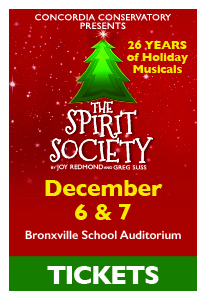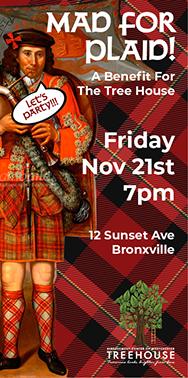From the Mayor: Impact of Millennial Generation Is Growing

By Mary C. Marvin, Mayor, Village of Bronxville
Because of their distinctive characteristics, future planning on every level has to adjust accordingly.
As illustration, millennials have grown up in a world that emphasized the value of convenience. Between takeout food, video streaming, personalized social media feeds, and the ability to Google any question in real time, they have been conditioned to think in terms of how fast, efficient, and available a service or product can reach them.
As a direct response to this phenomenon, Walmart is currently expanding its same-day online grocery delivery service to 100 metro areas, covering roughly 40% of U.S. households by the end of this year.
Millennials have also aged in a world of choices; be it Netflix options, online product comparisons, and then nearly a dozen ways to pay when an item or service is chosen. Cost is a big factor, given they saddle more debt than any other generation. The average millennial debt – mostly due to college loans – is $40,000 per person, while the corresponding average salary is $35,000.
Unlike past generations who were hyper-focused on acquiring “things,” millennials spend much of their disposable income to buy “experiences.” As “millennial entrepreneur” Taylor Smith said on NBC, “We aren’t spending our money on cars, TVs, and watches. We’re renting scooters and touring Vietnam, rocking out at music festivals or hiking Machu Picchu.”
In the current market, if you sell a physical product, the item needs to tell a story or paint an experience to a millennial. (I harken back to the J. Peterman catalogue.) Tom’s Shoes is a perfect example of a brand that was able to tap into this desire. Their one-for-one purchase and giveaway has become a new category of socially conscious marketing, cementing a connection with people and causes that millennials value.
As far as purchases, millennials have little interest in owning big-ticket items such as houses, televisions, and cars. Only one in three thinks a TV is a needed purchase, as they have Netflix, Hulu, and Amazon – all with the ability to binge watch on demand.
What millennials do want is to eat right and be healthy. Along with this has come a major uptick in the sales of athletic apparel and footwear.
Tastes and interests in every life sector are changing thanks to the power and numbers of millennials, and unless society keeps up, products, even neighborhoods, could become obsolete.
Some small but cautionary tales include companies manufacturing fabric softener, napkins, and bar soap. Thinking it unnecessary and chemically laden, millennials don’t buy fabric softener. As a result, Downy’s sales dropped 26% in just eight years. Six in ten households purchased napkins 15 years ago; now it is less than four, while the sales of paper towels are skyrocketing and only 33% of millennials use bar soap to shower vs 60% of those 65 and over.
Beyond these small blips on the screen, huge institutions such as McDonald’s, national and state lotteries, and even the stock market have felt the pinch because of millennial choices. McDonald’s is reviewing its business model as millennials are preferring fresher, healthier organic and ethically sourced food such as is served at Panera, as opposed to the McDonald’s offerings.
In the 50 to 64 age cohort, 61% of Americans played a lottery last year vs only 33% of millennials. Only 13% purchased stocks vs keeping their savings in Real Estate (30%), cash (30%), and even gold (17%).
Since most millennials do not have the car to transport the 24-roll pack of paper towels, rather opting to have it delivered, bulk grocers such as Costco and BJ’s are feeling the loss.
And in a true shot to “Americana,” the sales of brand-name beer and Harleys are declining. If the millennial taste preferences for craft beer, wine, and liquor continue, by 2030, beer will no longer have the largest share of the alcohol market.
Do-rags, sidecars, and patch-laden leather jackets do not resonate with millennials. Harley Davidson, so feeling the pinch, has been re-tooling factories to manufacture scooters and attract a new market retailing at half the price of a basic Harley.
Net-net, the influence millennials have in every aspect of life is growing daily. As a society, we need to understand and engage this segment of society on their terms.
Pictured here: Mayor Mary Marvin.
Photo by N. Bower
Editor's note: As a public service, MyhometownBronxville publishes articles from local institutions, officeholders, and individuals. MyhometownBronxville does not fact-check statements therein, and any opinions expressed therein do not necessarily reflect the thinking of its staff.
Government & History Directory
Bronxville is a quaint village (one square mile) located just 16 miles north of midtown Manhattan (roughly 30 minutes on the train) and has a population of approximately 6,500. It is known as a premier community with an excellent public school (K-12) and easy access to Manhattan. Bronxville offers many amenities including an attractive business district, a hospital (Lawrence Hospital), public paddle and tennis courts, fine dining at local restaurants, two private country clubs and a community library.
While the earliest settlers of Bronxville date back to the first half of the 18th century, the history of the modern suburb of Bronxville began in 1890 when William Van Duzer Lawrence purchased a farm and commissioned the architect, William A. Bates, to design a planned community of houses for well-known artists and professionals that became a thriving art colony. This community, now called Lawrence Park, is listed on the National register of Historic Places and many of the homes still have artists’ studios. A neighborhood association within Lawrence Park called “The Hilltop Association” keeps this heritage alive with art shows and other events for neighbors.
Bronxville offers many charming neighborhoods as well as a variety of living options for residents including single family homes, town houses, cooperatives and condominiums. One of the chief benefits of living in “the village” is that your children can attend the Bronxville School.
The Bronxville postal zone (10708, known as “Bronxville PO”) includes the village of Bronxville as well as the Chester Heights section of Eastchester, parts of Tuckahoe and the Lawrence Park West, Cedar Knolls, Armour Villa and Longvale sections of Yonkers. Many of these areas have their own distinct character. For instance, the Armour Villa section has many historic homes and even has its own newsletter called “The Villa Voice” which reports on neighborhood news.
Link to Village of Bronxville One Square Mile Monthly Newsletter
Village of Bronxville Administrative Offices
337-6500
Open 9:00am - 4pm excluding holidays and weekends
Bronxville Police Department
337-0500
Open 24 hours
Bronxville Parking Violations
337-2024
Open 9:00am - 4pm excluding holidays and weekends
Bronxville Fire Deparment
793-6400

















